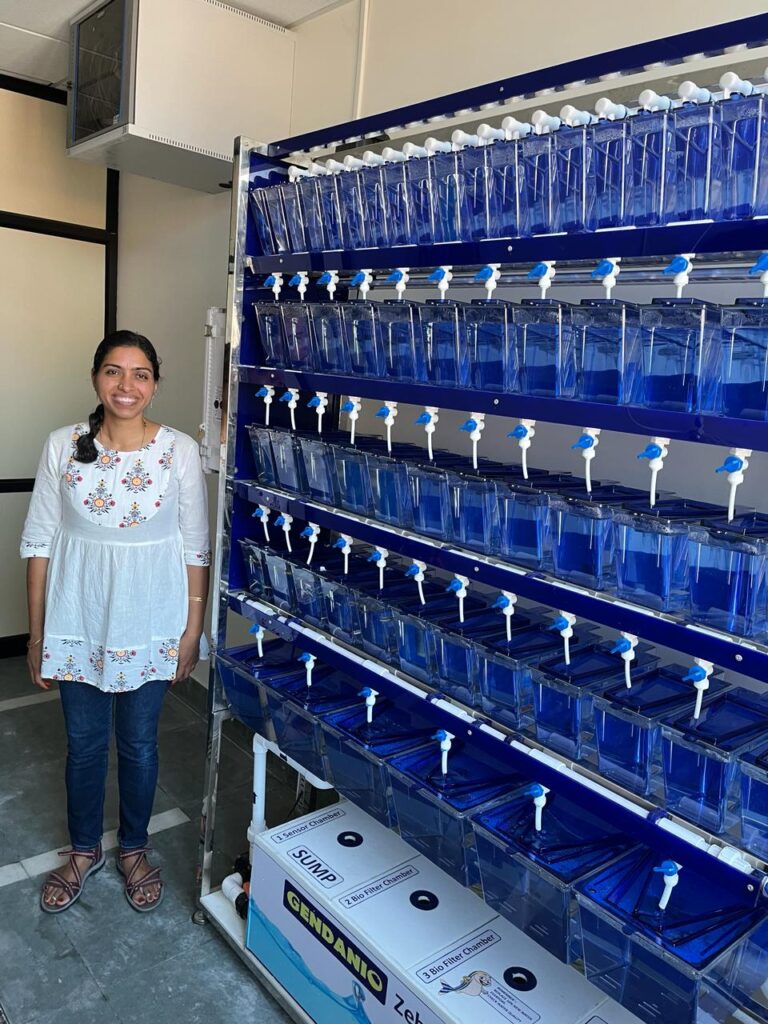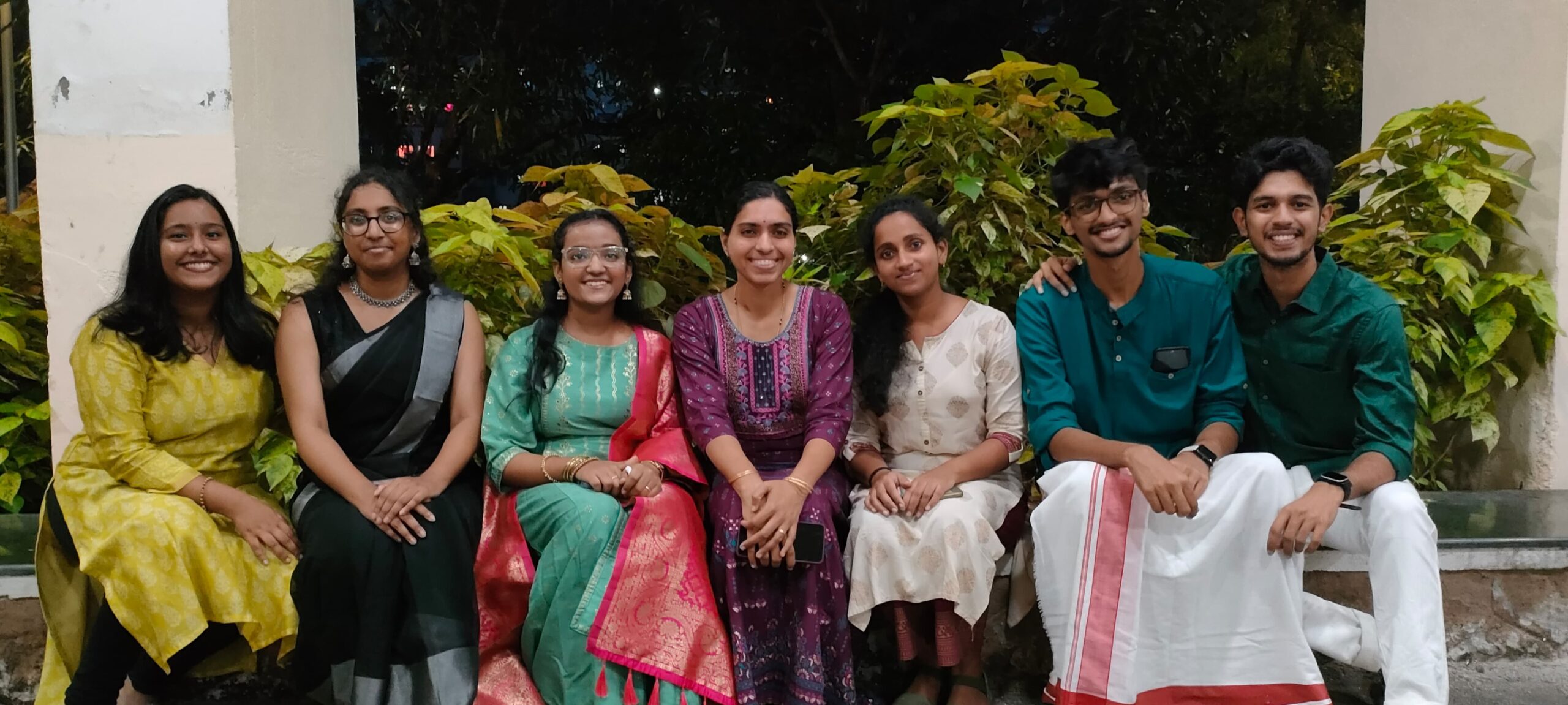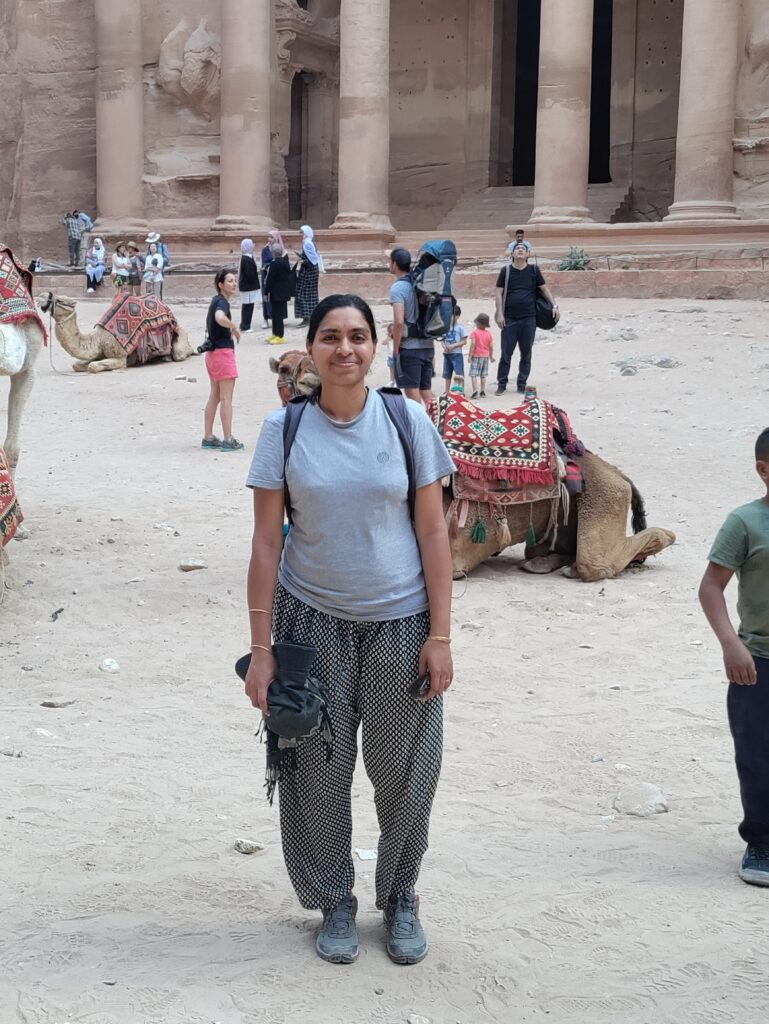Hello, Amrutha. Could you introduce yourself to our readers?
I am a newish PI in the School of Biology, Indian Institute of Science Education and Research, Thiruvananthapuram, where we are the first zebrafish lab. Prior to this, I was a post-doctoral fellow at the Weizmann Institute of Science, Israel and at the University of Montreal, Canada. I was a graduate student at the Jawaharlal Nehru Centre for Advanced Scientific Research, Bangalore, and a visiting student at ENS-Lyon, France, and the University of Strasbourg during my PhD. Outside of the lab and the classroom, I love to travel, hike, cook, listen to a lot of classical music, and spend time with family.

What do you work on and why did you choose this field for your research?
I work on early neurodevelopment using zebrafish as a model. I have dabbled with quite a few projects since my PhD, all around the theme of understanding how genes and molecules regulate neuronal development and differentiation. After working with a bunch of different model systems during my PhD – including rodents, stem cells, and zebrafish – I settled on zebrafish, owing to the advantage of external development of zebrafish embryos. While I was trained as a molecular biologist during my PhD, I also worked on mouse behavior, which I found very interesting. This led me to work on zebrafish behavior. During my post-doc, I also developed a project on stress resilience in zebrafish. Integrating all of this, my lab at IISER Trivandrum currently looks at the molecular drivers of behavior and disease during development using zebrafish.
That’s quite a spread of model systems! How did you get the chance to work with different systems? And, what was working with different models like?
My exposure to different model systems began during my masters, where we had a bunch of different organisms being maintained in the research facility. I worked with fruit flies, cells in culture, and cotton bollworm (Helicoverpa armigera) during this time. In addition, we had a well-equipped molecular biology laboratory, which in retrospect, was a privileged setting.
During my PhD, I began working on two projects simultaneously. For one of them, we primarily used stem cells and employed zebrafish to validate our findings in vivo, while for the other, we worked on the behavioral characterization of a knockout mouse model. More than out of choice, the systems we used were decided based on the nature of the question, their availability, and feasibility. I ended up working primarily with zebrafish in my post-doc, but it was a greatly enriching experience to handle a diverse set of organisms from early on. This gives me the flexibility to go back to cell culture and mice if our research question requires us to.
One common thread I noticed between all these different systems was the amount of care each one of them needed. In my experience, I learned that if one does not give them attention and love, they will likely not thrive.
Interesting. Can you elaborate on the research that your lab does right now?
In the lab, our research focuses on the development of different behaviors and the cause of specific neurodevelopmental disorders.
Zebrafish are tiny tropical fish that show complex behaviors, but we are only beginning to scratch the surface of what we know about them. Unlike in rodents, zebrafish behavior is still an emerging field, and we enjoy developing new behavioral assays. Currently, we are establishing assays to look at anxiety, social behavior, learning, and memory at different stages of life. In collaboration with data scientists, we also work on identifying new analysis methods and integrating machine learning into our analysis pipelines. In the next few years, we hope to uncover the neural and molecular basis of how these behaviors develop.
Alongside, we also work on epilepsy, a neurodevelopmental disorder. Since zebrafish develop externally, they are ideal for studying defects that occur during neurodevelopment which eventually cause conditions such as epilepsy. We look at brain development in genetic mutants at the cellular and molecular levels. In the long run, we hope to work with the Indian medical ecosystem to better understand Indian epilepsies and identify possible treatment strategies.
You set up your lab recently at IISER-Trivandrum. Can you also tell me a little bit about your experience setting up your lab and your learnings so far?

It has been an exhilarating experience and one that I, at times, felt ill-equipped for. There were many skills that were required to get a lab set up and running that I had no idea about. For instance, I had to plan my lab space, make decisions on where to erect walls, the thickness of the granite for laboratory workbenches, understand how tendering for an equipment works, etc. As I told someone recently, the last few months were like being on a treadmill, where you feel like you have been running forever, but without much actual progress. Now, we have a functional zebrafish facility and are running several fun experiments. The joy and satisfaction of seeing the first experiment in your lab work is matchless. I have amazing people to work with, within the lab and in the school, and I am thankful for their trust to walk this journey with me.
What would be some of your pointers for researchers who are starting out?
For people who are starting out and looking for pointers, here are a few that I think are crucial:
- Focus on getting the system in place (lab meetings, lab orders, lab responsibilities, lab lunches, lab notebooks, lab cleaning, and anything else you care about).
- Setting up a lab is hard work. Be kind to yourself and the people who work with you.
- Appreciate small wins.
- Give trainees space and autonomy. I am constantly surprised by how innovative and capable they are.
What excites you the most right now?
The power of machine learning tools and the constantly evolving imaging methods has me going WOW.
Now, a little bit about InSDB – What made you become a member of InSDB and what is something that you would like InSDB to start?
The people and the science. InSDB is a lively and dynamic community with a mix of new and more established PIs, working on diverse questions in developmental biology. The recent InSDB meeting was an enriching scientific experience, and I also met several amazing people! It is a community I also urge students from my lab to engage with.
It would be great to have monthly developmental biology webinars from national and international guests. InSDB could also support students by offering travel grants to work in labs across India or attend relevant conferences. Finally, if we could have focus groups within InSDB to discuss specific topics in depth and for activities such as journal clubs, that would be great as well.
Where do you want to see the Indian devbio community in the next ten years? What are some of the changes that should happen?
I am glad to be a part of today’s thriving Indian devbio community. I hope we have more opportunities to exchange ideas and share tools, reagents, and instruments in the future wherever possible. I do believe these collaborations will strengthen our science and put us on the global map.
Thanks for taking the time to do this, Amrutha. Let us end this with a fun fact that people probably don’t know about you.
While I appreciate their requirement in different ecosystems, I can’t stand lizards! On an unrelated note, I have a good sense of direction (in case we get lost in a devbio meeting somewhere someday).
—
Dr. Amrutha Swaminathan is an assistant professor at the Indian Institute of Science Education and Research, Thiruvananthapuram. You can get in touch with her here.






